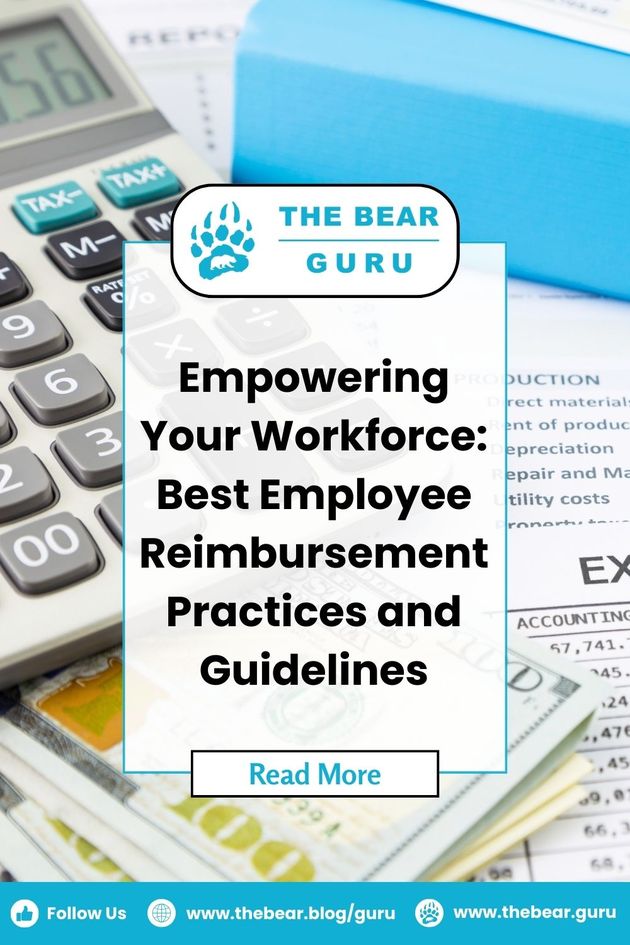Empowering Your Workforce: Best Employee Reimbursement Practices and Guidelines
If you find yourself navigating the complexities of employee reimbursement, it becomes essential to familiarize yourself with the intricate web of tax regulations and local payroll laws that govern such financial transactions. Delving into the nuances of employee reimbursement entails a comprehensive understanding of the intricate legal frameworks that dictate the process.
By delving into these regulations, you can ensure compliance, fostering a seamless and legally sound reimbursement system within your organization. This knowledge not only safeguards your business from potential legal complications but also ensures that employees receive their rightful reimbursements in accordance with the established legal parameters.
What is Employee Reimbursement?
Employee Reimbursement refers to the amount paid back by an employer to an employee who makes payment out-of-pocket to perform the duties assigned to them. Many types of business expenses can be reimbursed.
Travel expenses are one of the most common employee expenses that are reimbursed because employers are permitted to take a tax deduction for travel expenses such as:
- Internet or Phone Charges Made while Traveling
- Airline Tickets and Tips for Essential Purchases during the Flight and Luggage
- Toll Fees
- Taxi and Tips
- Accommodation Fee for Overnight Travel
- Car Wash and Maintenance Requirements on Vehicles Used for Work
- Gas and Mileage
- Employee Food
Most business expenses reimbursed are often but not always related to travel expenses. When you give your hard-working team a lunch treat, it can be written off as an employee expense. Fast food business offers meals to employees, and the accounting department will record the expenses. When a non-food business provides reimbursements for food expenses to employees, this usually includes:
- Cost of the Food
- Uniforms and Supplies
- Tips for Eating
- Customer Entertainment
Depending on the industry, employees may need various materials to do their jobs. There are many reasons to pay reimbursements for work-related expenses, even though not all employers do so.
Employees are more satisfied when they don't have to pay for equipment out of pocket, and with benefits such as reimbursement, employers can attract better-quality employees. Labor organizations may have agreements with employers requiring them to pay for work boots, hard hats, and other equipment. Some of the things that can be reimbursed as work-related expenses include:
- Work Clothes or Equipment
- Business Cards and Other Advertising Expenses
- Fees for Dry Cleaning
- Costs for Photocopying, Mailing, Faxing, and Phone Calls
- Tool
- Cost of Education
- Child Care
🏆️ Business Fact!
Statistics show that only 40% of employees know their employer offers reimbursement for education, even though 80% of employees show interest in returning to school, and only 2% benefit from this opportunity.
How to Report Employee Expenses?
The process for reimbursement is quite simple. In many firms, employees are required to provide financial statements of the expenses for a specific period. The expense report is submitted to Human Resources with proof, and they wait for payment.
However, the process may require more effort for HR professionals. When the expense report gets to HR, a specialist in the department checks the report, verifies the expenses, and ensures they have all the necessary documents.
Reimbursement to employees helps organizations control costs by setting policies about what can be paid back. Some firms use the per diem method to determine how much should be included in the policy.
For some businesses, employees are given a credit card linked to the company account. Some companies, however, require employees to pay from their accounts and be reimbursed electronically.
Encountering Reimbursement Issues
If the correct receipts are not included or the expense report contains inconsistencies, the Human Resources Department must request additional information from the employee. Some HR departments now use technologies to simplify this process via automation.
Employees can always use technology to control how money is spent. Mobile phones can be used to upload images of receipts and enter expense information automatically for the accounting department. The HR department will not approve an expense if it cannot be justified. Therefore, all proof of payment, such as receipts, must be presented for quick verification and reimbursement.
The Human Resources Departments are responsible for processing and verifying reimbursement claims. It is good for HR departments to be proactive about overpaying to ensure that the company does not incur any losses.
🏆️ Business Trivia
According to ACFE's 2018 report to the United Nations, fraud related to reimbursement accounts for up to 14% of company fraud, with an average loss of $31,000, and it takes about 24 months to be exposed.
Are Taxes Paid on Reimbursement?
Employers can take benefits and tax breaks by paying reimbursements for work-related expenses. This is one of the main reasons for collecting receipts and record keeping.
Managing Employee Reimbursements
There are a lot of good practices to follow when it comes to reimbursements. These include:
- Use expense reporting software to improve your organization's ability to manage, control, and report on employee expenses
- Have a structured, integrated system in place for expense reporting that is easy for all employees to use
- Ensure that employees use secure payment methods and they are trained in techniques for proper record-keeping
- Check expenses regularly and make sure that payroll and expenses are kept separate
- Outline strict expense policies in your employee handbooks
- Be ready to listen to the requests of employees for reimbursement
Enforcing a Well-defined Company Policy
A well-defined policy is essential for the operations of the Human Resources department. With the rules of what can and cannot be accepted, employers will know what to provide when requesting reimbursement. This helps managers to delegate and engage directly with employees only when conflicts arise.
Accepting employee suggestions will help managers to create a culture of mutual respect. It is a good idea to have a suggestion box around the premises and encourage employees to give their opinion about company policies during meetings.
Better Procedure for Employees to Request Reimbursement
Expenditure reporting should be centralized and digitized to help save space and streamline the accounting process. The software can help cross-check requests for accuracy and ensure all requests are attended to.
For some businesses, this may imply sending expense reports by email to a specific inbox, while other businesses may invest in software that enables them to have more features. Ensure you implement software that can be used by all employees needing reimbursement.
Effectiveness of Automation
An extra yet effective feature of automation software is managing HR activities regarding reimbursements. This helps reduce the number of small jobs employees have to do. HR software can make sure that expense reports are completed correctly before HR professionals review them. The software may also able to automate tasks such as documentation and auditing.
Reimbursement Measure, Control, and Report
It's imperative to consider expenses as a metric to help establish goals and review trends. You can do this by providing and reviewing payment reports from time to time and developing strategies that provide the best results. A professional HR and accounting team can determine the best criteria to measure the success of your goals.
Frequently Asked Questions (FAQs)
- Who is responsible for the reimbursement of travel expenses?
- When travel expenses are incurred, the HR department is responsible for drafting a form sent to the accounting department. This will be done after the expense report is verified and approved.
- What if expenses cannot be verified?
- The employee will be asked to provide further information. The claim may be rejected if the information is not satisfactory.
- How long does the refund process take?
- The time would depend on the policy of the company, which is usually disclosed so the employee knows when they will be reimbursed. The time taken is influenced by the following:
- The time it takes the accounting and HR departments to verify and send the payment.
- How long it takes the bank to send the money into the employee's account.
- The time it takes the accounting and HR departments to verify and send the payment.
- The time would depend on the policy of the company, which is usually disclosed so the employee knows when they will be reimbursed. The time taken is influenced by the following:
- Is reimbursement a part of the worker’s salary?
- Absolutely not! Reimbursement is required when employees spend out-of-pocket on behalf of the company. This can happen during a business trip or when they must be reimbursed for agreed expenses.
- Is reimbursement an income?
- No, it is not an income. An employer is only being paid back an amount that has already been spent in the past.
- Are remote workers entitled to reimbursement?
- Remote employees are often supplied the technologies they need by their employers. This could sometimes mean providing them with reliable, high-quality internet service, which often must be reported as an employee expense. This may not be the case if the employer directly pays for the utility bills.
- Depending on company policy, remote workers may be eligible for reimbursement of other expenses.
- Many states like New York, California, Iowa, Illinois, and Montana have reimbursement laws for remote workers.
We now understand that employee reimbursement refers to money returned to employees after making out-of-pocket payments on their employer's behalf. Workers are reimbursed for a variety of reasons, including expenses meant for travel, health, gas mileage, supplies, and equipment.
Reimbursements are recorded in expense reports and verified by Human Resources Management. To simplify the reimbursement process, businesses need to have a clear reimbursement policy that clearly defines the eligible fees. Brands can also use HR software to automate their human resources functions, including submitting expense reports.
This concludes this article, and if you want to know more, drop your comments below!
Recommended for you
Travel to Thailand: The Best Way to Budget
Dr. Theodore (Professor Bear)
Holidays in Thailand: Celebrating A Memorable Chinese New Year
Marc Tubelleja (Curious Bear)
Holidays in Thailand: Celebrating Mother’s Day Across Generations
Holly (Holiday Bear)
Holidays in Thailand: Exploring Ramadan Traditions and Festivities
Holly (Holiday Bear)

























